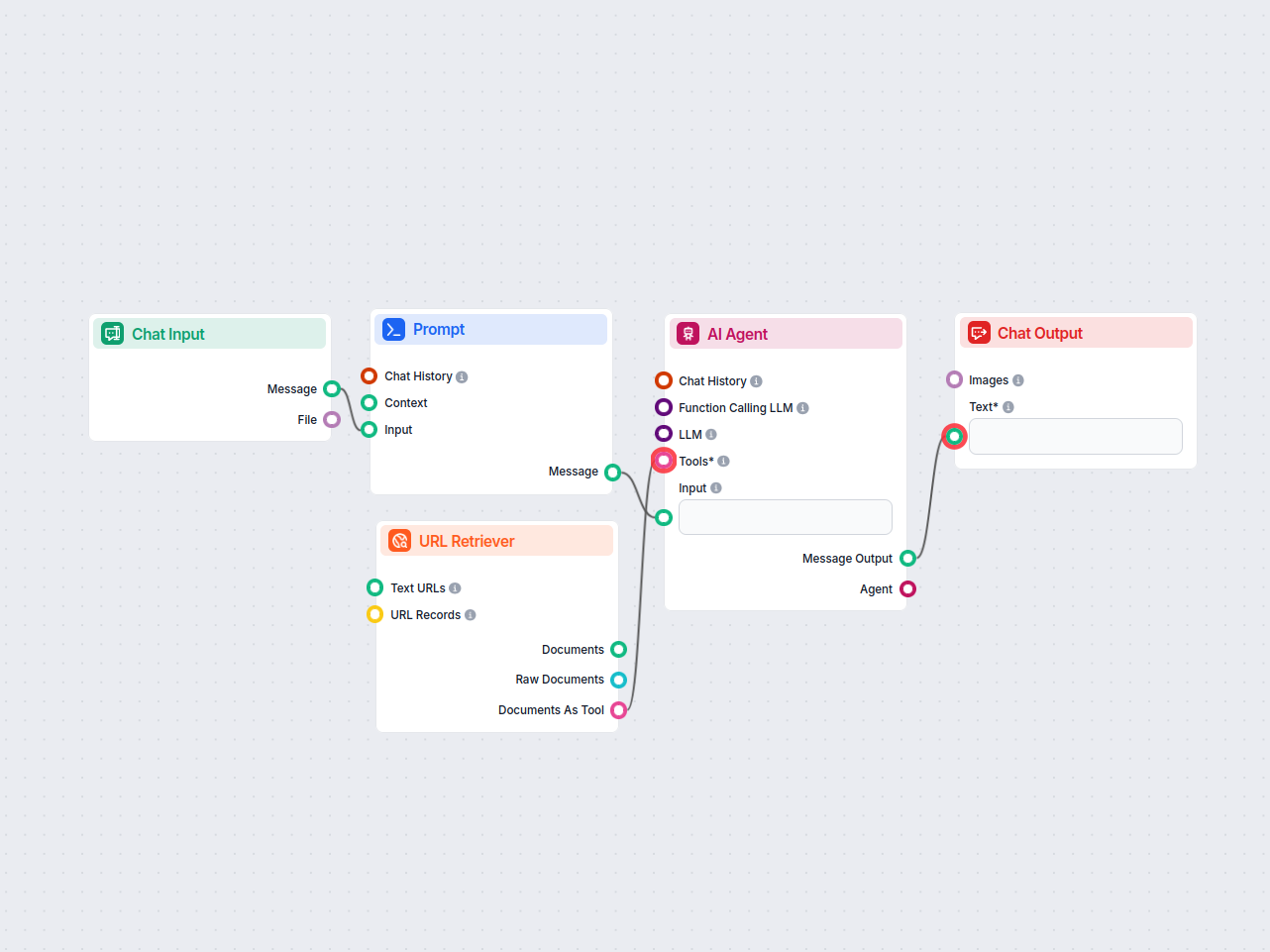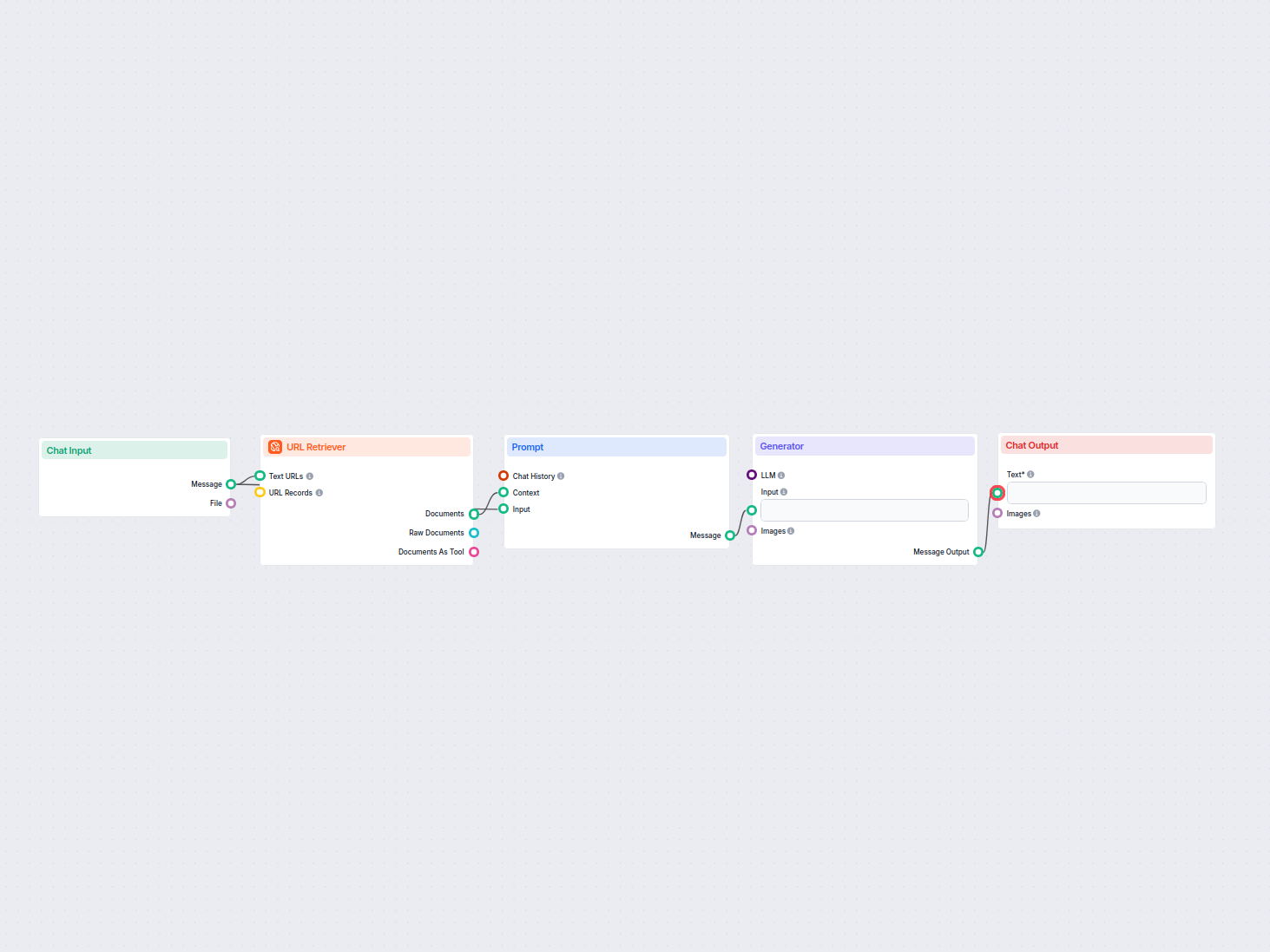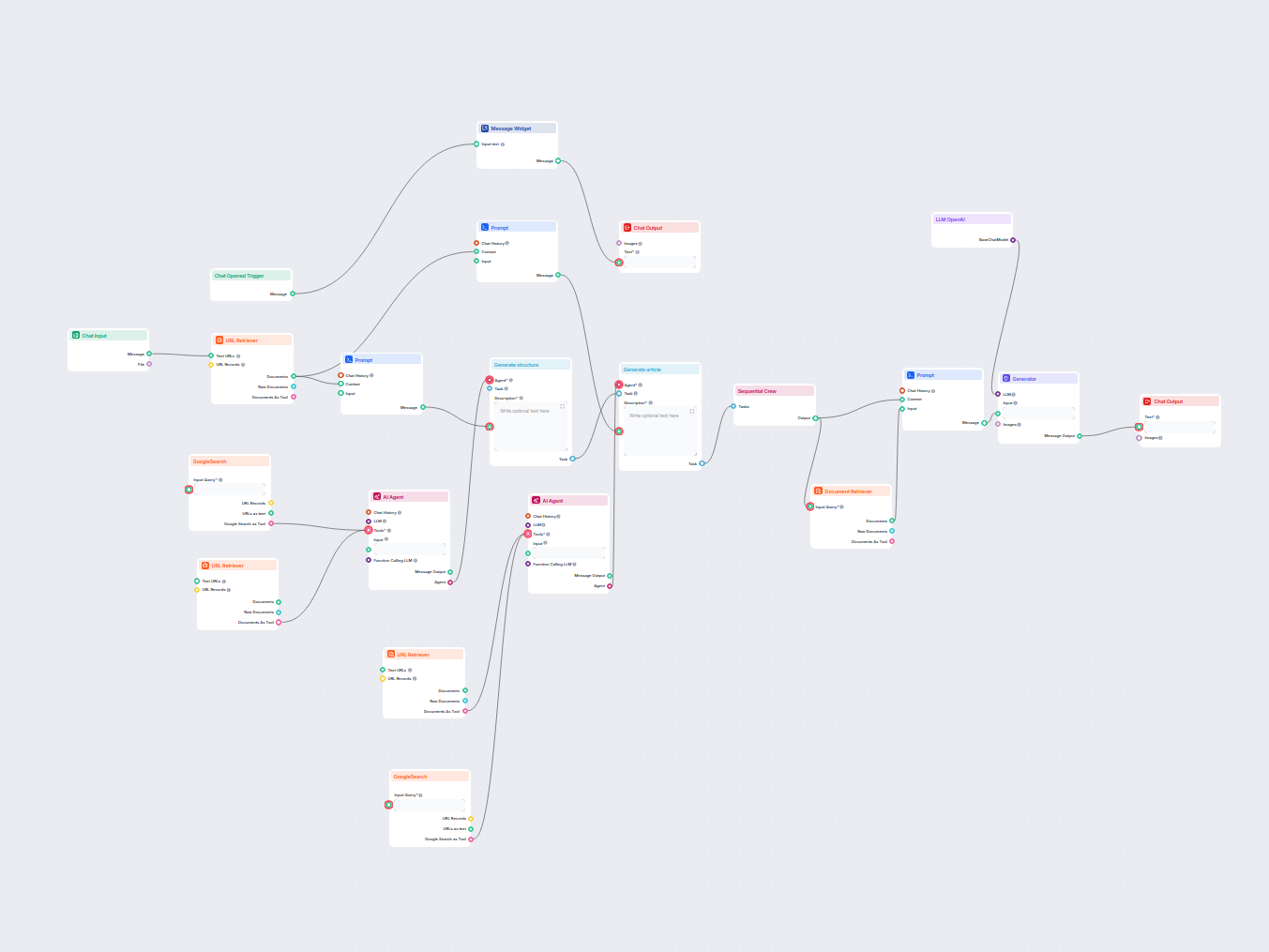Prompt
Template prompt for generating a .bib entry from a given paper URL.
Generate a LaTeX-formatted bibliography entry for any academic article by simply providing its URL. This workflow automates extracting article details and converts them into a ready-to-use .bib file citation.

Flows
Template prompt for generating a .bib entry from a given paper URL.
Below is a complete list of all components used in this flow to achieve its functionality. Components are the building blocks of every AI Flow. They allow you to create complex interactions and automate tasks by connecting various functionalities. Each component serves a specific purpose, such as handling user input, processing data, or integrating with external services.
The Chat Input component in FlowHunt initiates user interactions by capturing messages from the Playground. It serves as the starting point for flows, enabling the workflow to process both text and file-based inputs.
Learn how FlowHunt's Prompt component lets you define your AI bot’s role and behavior, ensuring relevant, personalized responses. Customize prompts and templates for effective, context-aware chatbot flows.
The AI Agent component in FlowHunt empowers your workflows with autonomous decision-making and tool-using capabilities. It leverages large language models and connects to various tools to solve tasks, follow goals, and provide intelligent responses. Ideal for building advanced automations and interactive AI solutions.
Unlock web content in your workflows with the URL Retriever component. Effortlessly extract and process the text and metadata from any list of URLs—including web articles, documents, and more. Supports advanced options like OCR for images, selective metadata extraction, and customizable caching, making it ideal for building knowledge-rich AI flows and automations.
Discover the Chat Output component in FlowHunt—finalize chatbot responses with flexible, multi-part outputs. Essential for seamless flow completion and creating advanced, interactive AI chatbots.
Flow description
The “Latex Bibliography Generator” is an automated workflow designed to streamline the process of generating BibTeX entries for academic papers and articles. By simply providing a URL to a paper, this workflow automatically retrieves the necessary information and formats it into a BibTeX entry suitable for inclusion in a LaTeX project’s .bib file.
@article{Turing1936,
title={On computable numbers, with an application to the Entscheidungsproblem},
author={Turing, Alan Mathison},
journal={J. of Math},
volume={58},
pages={345--363},
year={1936}
}
.bib file.| Step | Node Name | Functionality |
|---|---|---|
| 1. User Input | Chat Input | Receives the paper/article URL from the user |
| 2. Prompt Setup | Prompt Template | Prepares the instructional prompt for the AI |
| 3. Content Fetch | URL Retriever | Gathers article metadata and content from the URL |
| 4. Processing | AI Agent | Generates the BibTeX entry using all inputs |
| 5. Output | Chat Output | Presents the BibTeX entry to the user |
The Latex Bibliography Generator automates the extraction and formatting of bibliographic information. It is particularly useful for anyone needing to quickly build accurate and properly formatted bibliographies for academic writing, thus streamlining a traditionally tedious part of the research process.
We help companies like yours to develop smart chatbots, MCP Servers, AI tools or other types of AI automation to replace human in repetitive tasks in your organization.
Automatically generates factual, well-structured essays in MLA format using credible sources found via Google search. Ideal for students and professionals seeki...
Automatically generates Schema.org structured data in JSON format for any website URL, making it easier for search engines to understand and index your website ...
Transform technical documentation from a URL into a compelling, SEO-optimized article for your website. This flow analyzes top-ranking competitor content, gener...
Cookie Consent
We use cookies to enhance your browsing experience and analyze our traffic. See our privacy policy.



